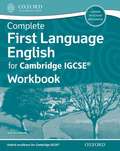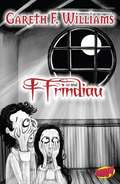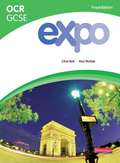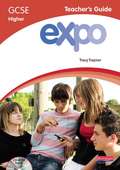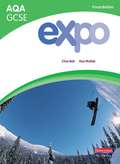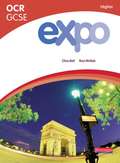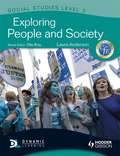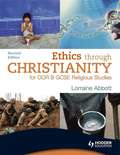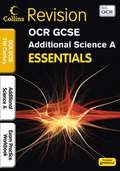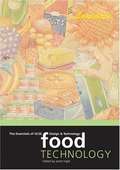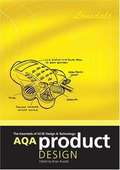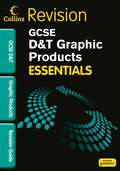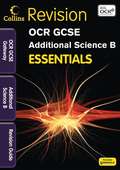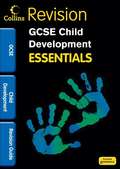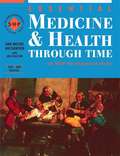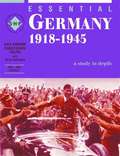- Table View
- List View
Fish gill structure (UEB Contracted)
This page shows three images of fish gill structure. A locator dot and title are shown. These must always be at the top left of the page when the image is the right way up. There is a fish in the top of the page. An enlargement of the fish head in an image border in the centre of the page, and fish filaments in the bottom at the page. The top image shows a fish facing to the left with its tail to the right. Four fins and a tail can be found. The middle image shows a fish's head facing to the left. The gill cover (operculum) has been removed to show the gills, and a fin, is shown to the right of these. The bottom image shows two, gill filaments with their inter-lapping lamellae.
Fish gill structure (Large Print)
This page shows three images of fish gill structure. A locator dot and title are shown. These must always be at the top left of the page when the image is the right way up. There is a fish in the top of the page. An enlargement of the fish head in an image border in the centre of the page, and fish filaments in the bottom at the page. The top image shows a fish facing to the left with its tail to the right. Four fins and a tail can be found. The middle image shows a fish's head facing to the left. The gill cover (operculum) has been removed to show the gills, and a fin, is shown to the right of these. The bottom image shows two, gill filaments with their inter-lapping lamellae.
First Language English for Cambridge IGCSE (PDF)
by Jane ArredondoTangibly build the crucial exam skills with a huge bank of activities and exercises; this comprehensive workbook ensures students get the essential practice key to exam confidence. Full of activities to directly improve reading and writing skills, it supports strong achievement in the Cambridge IGCSE.
Ffrindiau (Cyfres Whap!)
by Gareth WilliamsPwy yw'r llais sy'n gweiddi 'Blaaan...tos' yn y nos? Pwy yw'r ysbrydion sy'n llechu yng nghornel yr atig? Dyma'r cwestiynau mae Tegwen yn ceisio'u datrys pan mae'n ymweld â'i thad yn Stryd y Parc. Beth yn union ddigwyddodd yma flynyddoedd maith yn ôl? Dyma drydedd nofel yr awdur yng nghyfres Whap! Mae'r ffin rhwng realiti a'r byd ysbrydol yn denau yn y nofel arswyd hon. [Who's behind the voice that wails at night? Who are the ghosts that lurk in the corner of the attic? These are the questions that puzzle Tegwen when she visits her father. What exactly happened there many years ago? The boundary between reality and the spirit world overlaps in this horror novel, the author's third novel in the Whap! series for teenagers.] *Datganiad hawlfraint Gwneir y copi hwn dan dermau Rheoliadau (Anabledd) Hawlfraint a Hawliau mewn Perfformiadau 2014 i'w ddefnyddio gan berson sy'n anabl o ran print yn unig. Oni chaniateir gan gyfraith, ni ellir ei gopïo ymhellach, na'i roi i unrhyw berson arall, heb ganiatâd.
Factors affecting climate (UEB Uncontracted)
There are two diagrams of the Earth on this page; one is at the top of the page and the other at the bottom. Each has a dashed line image border. There is a locator dot shown, which will be at the top left of the page when the image is the right way up. Winter: In the top diagram, to the left of the page, there is a textured disc representing the Earth, with a ring of another texture showing the atmosphere surrounding it. On the top right part of the Earth there are two heavy lines showing the area of the Earth's surface heated by the sun's rays, which are represented by two textured bars extending to the right. This shows how, in northerly areas in winter, the sun's rays are spread out more and have to travel further through the atmosphere. These factors, together with shorter winter days and increased reflection of the sun's energy back into space, all have the effect of reducing the amount of energy available for heating the surface of the Earth. A heavy dashed line showing the Equator goes across at an angle halfway up the disc. The Earth's axis is shown at its top and bottom by short heavy lines. To the right of these are four descriptive labels. Summre: In the diagram at the bottom of the page there are descriptive labels to the left. To the right of the page, there is a textured disc representing the Earth, with a ring of another texture showing the atmosphere surrounding it. On the top left part of the Earth there are two heavy lines showing the area of the Earth's surface heated by the sun's rays, which are represented by two textured bars extending to the left. This shows how, in northerly areas in summer, the sun's rays are spread out less and have to travel a shorter distance through the atmosphere. These factors, together with longer summer days and decreased reflection of the sun's energy back into space, all have the effect of increasing the amount of energy available for heating the surface of the Earth. A heavy dashed line showing the Equator goes across at an angle halfway up the disc. The Earth's axis is shown at its top and bottom by short heavy lines.
Factors affecting climate (UEB Contracted)
There are two diagrams of the Earth on this page; one is at the top of the page and the other at the bottom. Each has a dashed line image border. There is a locator dot shown, which will be at the top left of the page when the image is the right way up. Winter: In the top diagram, to the left of the page, there is a textured disc representing the Earth, with a ring of another texture showing the atmosphere surrounding it. On the top right part of the Earth there are two heavy lines showing the area of the Earth's surface heated by the sun's rays, which are represented by two textured bars extending to the right. This shows how, in northerly areas in winter, the sun's rays are spread out more and have to travel further through the atmosphere. These factors, together with shorter winter days and increased reflection of the sun's energy back into space, all have the effect of reducing the amount of energy available for heating the surface of the Earth. A heavy dashed line showing the Equator goes across at an angle halfway up the disc. The Earth's axis is shown at its top and bottom by short heavy lines. To the right of these are four descriptive labels. Summre: In the diagram at the bottom of the page there are descriptive labels to the left. To the right of the page, there is a textured disc representing the Earth, with a ring of another texture showing the atmosphere surrounding it. On the top left part of the Earth there are two heavy lines showing the area of the Earth's surface heated by the sun's rays, which are represented by two textured bars extending to the left. This shows how, in northerly areas in summer, the sun's rays are spread out less and have to travel a shorter distance through the atmosphere. These factors, together with longer summer days and decreased reflection of the sun's energy back into space, all have the effect of increasing the amount of energy available for heating the surface of the Earth. A heavy dashed line showing the Equator goes across at an angle halfway up the disc. The Earth's axis is shown at its top and bottom by short heavy lines.
Factors affecting climate (Large Print)
There are two diagrams of the Earth on this page; one is at the top of the page and the other at the bottom. Each has a dashed line image border. There is a locator dot shown, which will be at the top left of the page when the image is the right way up. Winter: In the top diagram, to the left of the page, there is a textured disc representing the Earth, with a ring of another texture showing the atmosphere surrounding it. On the top right part of the Earth there are two heavy lines showing the area of the Earth's surface heated by the sun's rays, which are represented by two textured bars extending to the right. This shows how, in northerly areas in winter, the sun's rays are spread out more and have to travel further through the atmosphere. These factors, together with shorter winter days and increased reflection of the sun's energy back into space, all have the effect of reducing the amount of energy available for heating the surface of the Earth. A heavy dashed line showing the Equator goes across at an angle halfway up the disc. The Earth's axis is shown at its top and bottom by short heavy lines. To the right of these are four descriptive labels. Summre: In the diagram at the bottom of the page there are descriptive labels to the left. To the right of the page, there is a textured disc representing the Earth, with a ring of another texture showing the atmosphere surrounding it. On the top left part of the Earth there are two heavy lines showing the area of the Earth's surface heated by the sun's rays, which are represented by two textured bars extending to the left. This shows how, in northerly areas in summer, the sun's rays are spread out less and have to travel a shorter distance through the atmosphere. These factors, together with longer summer days and decreased reflection of the sun's energy back into space, all have the effect of increasing the amount of energy available for heating the surface of the Earth. A heavy dashed line showing the Equator goes across at an angle halfway up the disc. The Earth's axis is shown at its top and bottom by short heavy lines.
Expo OCR GCSE French Foundation: student book (PDF)
by Clive Bell Rosie McnabHelping every student get a better grade. Expo: OCR GCSE French provides the best match to the specification with a strong focus on controlled assessment and exam preparation from day one. Written by a highly regarded team of authors and examiners, students can be sure this Student Book matches the specification. Controlled assessment and exam practice, specifically tailored for OCR, are integrated throughout so that every student has the chance to shine on the day. Fully differentiated for foundation level to engage students at just the right pace. Graded examples and examiner tips show students how to aim for the best possible grade through perfecting key grammar and language skills.
Expo GCSE Higher: teacher's guide (PDF)
by Tracy TraynorTranscripts of all the audio used in the Higher Student Book Ideas for starters and plenaries Step-by-step notes on introducing students to the controlled assessments Tips and advice and assessment preparation in Grade Studio sections.
Expo: AQA GCSE Foundation (PDF)
by Clive Bell Rosie McnabExpo: AQA GCSE Foundation Student Book has been written to prepare students for the latest AQA GCSE specification. With a strong focus on controlled assessment and exam preparation throughout the course, students can confidently aim for up to grades C at GCSE. Graded examples and examiner tips in Grade Studio show students how to aim for the best possible grade through perfecting key language skills.
Expo: OCR GCSE Higher (PDF)
by Rosi Mcnab Clive BellExpo: OCR GCSE Higher Student Book has been written to prepare more able students for the latest OCR GCSE specification. With a strong focus on controlled assessment and exam preparation throughout the course, students can aim for grades A*-C. Graded examples and examiner tips in Grade Studio show students how to get the best possible grade through perfecting key language skills.
Exploring People And Society (Curriculum For Excellence Ser.)
by Laura AndersonExam Board: SQA Level: Level 3 Subject: Social Studies First Teaching: September 2013 First Exam: June 2014 CfE Social Studies offers a range of titles designed to support innovative and active learning across the three subject areas of history, geography and modern studies, all directly related to the experiences and outcomes of Curriculum for Excellence. Student-friendly full colour textbooks at Level 3 make learning a journey that encourages thinking skills and embraces the philosophy of Assessment is for Learning, whilst establishing strong links to other subject areas and to the cross-cutting themes of Literacy, Numeracy and Health & Wellbeing. Enquiry Skills are embedded throughout, and each book provides a springboard to learning for student and teacher alike.
Ethics through Christianity for OCR B GCSE Religious Studies (PDF)
by Lorraine AbbottThis successful textbook for OCR Ethics has been re-editioned to support the 2009 OCR GCSE Religious Studies B specification. It can be used to deliver the short course for OCR GCSE RS B in ethics. It delivers the course through Christianity only, and therefore provides an in depth look at the issues in question. The book has a range of activities to engage the students; from key questions, discussion points, research tasks, extension activities to exam questions. Personal accounts of beliefs and experiences intersperse the main text to allow students to relate to the material they are reading. Each unit is summarised in the form of revision 'cards' to give students a 'snapshot look' at what they have just learned and need to learn for the exam. This book can be combined with Philosophy through Christianity for OCR B GCSE Religious Studies: Second Edition to provide support for the full course.
The essentials of GCSE OCR additional science for specification A. Student exam practice workbook. (PDF)
by Eliot Attridge Dorothy Warren Trevor Banham Baker Neil Dixon Bob Woodcock Andrew Macadam Matthew PriestlyThis workbook can be used at home or in the classroom to provide excellent preparation for tests and exams. It includes GCSE-style questions for every topic on the OCR 21st century GCSE additional science specification and clearly differentiates higher tier questions. Alternate ISBNs 9781905129706
The Essentials of GCSE Design & Technology: Food Technology (PDF)
by Judith Sunderland Angela Tooley Christine Finch Janet InglisThis book has been designed to support students in the area of Design and Technology: Food Technology at GCSE. It presents key areas in an attractive, uncomplicated way, taking into account different learning styles. It may be used throughout the course as an aid to teaching, during the Long Task as a support and finally as a revision guide prior to the final exams.
The Essentials of GCSE Design and Technology: Product Design (PDF)
by Brian RusselThis guide is designed to cover all areas of AQA Design and Technology: Product Design including design, skills, materials, techniques and production processes. In covering the core features of the AQA specification it attempts to present the key subject matter in a visually attractive, unintimidating way.
Essentials - OCR Gateway GCSE Chemistry: Revision Guide (PDF)
by Sam HolymanOCR Gateway GCSE Chemistry Essentials covers all the exam-assessed content on the OCR Gateway Chemistry specification. It is designed to help students get the most out of their revision.
Essentials: Graphic Products (PDF)
by Debbie EasonThe student-friendly, uncluttered approach to GCSE revision, guides students through the core content with succinct revision notes and practice questions that focus on the essential content needed for the exams.
Essentials: Revision Guide (PDF)
by Sam Holyman Natalie King Claire HutchinsonOCR Gateway GCSE Additional Science Essentials covers all the exam-assessed content on the OCR Gateway Additional Science specification. It is designed to help students get the most out of their revision. In formation is broken down into manageable chunks and higher tier material is clearly differentiated on the page.
Essentials: Revision guide (PDF)
by Judi Sunderland Leann CookeThe student-friendly, uncluttered approach to GCSE revision, guides students through the core Child Development content with succinct revision notes and practice questions that focus on the essential content needed for the exams.
Essential Modern World History Students' Book (student edition) (PDF)
by Ben WalshProvide complete support for your GCSE Modern World History candidates with best-selling books and digital resources from an author you can really trust. An accessible textbook covering the heartland of Modern World History, including World War I, Nazi Germany, International Relations between 1919 and 1939, World War II, and the Cold War. It is suitable for pupils studying Modern World History for GCSE, IGCSE or S Grade or international syllabuses. Essential Modern World History is: - Manageable - each topic is refined to its essentials and memorable key ideas - Practical- each topic has accessible and practical activities to help students think through the key ideas - Motivating - the author uses interesting case studies of real people to bring the topics to life.
Essential Medicine and Health: Student Book (PDF)
by Ian Coulson Ian Dawson Ann MooreCombine engaging tasks and effective exam preparation with this official development study for Schools History Project GCSE specifications.
Essential Maths Skills for Secondary Science (PDF)
by Cgp BooksEssential Maths Skills for Secondary Science
Essential Maths Skills for Secondary Science Answer Book (PDF)
by Cgp BooksEssential Maths Skills for Secondary Science Answer Book
Essential Germany 1918-1945 - A Study in Depth: student book
by Keith Shephard Schools History Project Dale Banham Christoper CulpinEssential Germany 1918-1945 is a textbook for the Germany GCSE depth study included in both Modern World History and Schools History Project specifications. It covers the essential content and skills required for exam success with any board. Chapter 1 investigates the successes and failures of Weimar Germany 1918-1933 Chapter 2 studies the rise of the Nazis over the same period Chapter 3 examines life in Nazi Germany 1933-1945 focusing particularly on the pre-war period. The book features Exam Busters - a pupil friendly guide to how to understand and meet the demands of GCSE. Using a range of thinking skills strategies and active learning techniques exam preparation becomes both fun and relevant to students wider learning objectives. As they revise they also become better thinkers.

